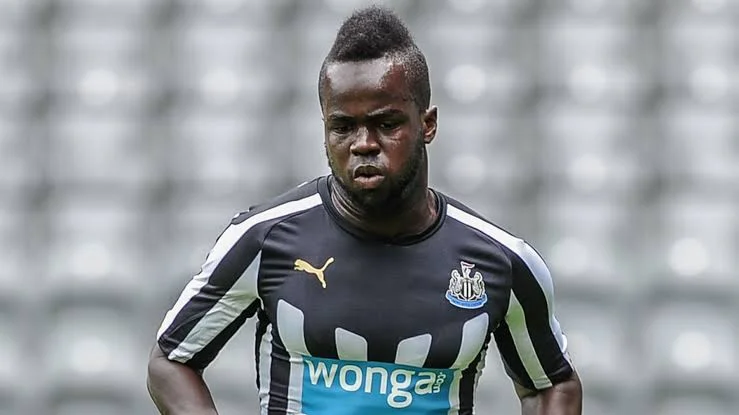Soccer is a sport that brings people together from all over the world. It is a game that many people enjoy watching and playing. However, like any other sport, soccer has its risks. One of the most tragic risks is the possibility of players dying on the field.
Over the years, there have been many soccer players who have lost their lives while playing the game they loved. These players come from different countries and have different backgrounds, but they all share a common bond: their love for soccer. In this article, we will take a look at 20 soccer players who died on the field. We will explore their stories, the circumstances surrounding their deaths, and the impact they had on the world of soccer.
It is important to remember that while soccer is a beautiful game, it can also be dangerous. The deaths of these 20 players serve as a reminder of the risks that come with playing the sport. However, it is also important to remember the joy and passion that soccer brings to millions of people around the world.
Understanding On-Field Fatalities
Soccer is a sport that is loved and played by millions of people worldwide. Unfortunately, it can also be a dangerous sport, and there have been instances where players have died on the field. Understanding the causes of on-field fatalities is crucial to prevent them from happening in the future.
There are several reasons why a soccer player may die on the field. Some of the most common causes include:
Cardiac Arrest
Cardiac arrest is one of the leading causes of on-field fatalities in soccer. It occurs when the heart suddenly stops beating, and the player collapses. This can happen due to a pre-existing heart condition or an undetected heart problem.
Head Injuries
Head injuries can also be fatal on the soccer field. These injuries can occur due to collisions with other players or the ball. In severe cases, head injuries can lead to brain damage or even death.
Heat Stroke
Heat stroke can occur when the body’s temperature rises too high, and the player’s body is unable to cool down. This can happen when playing in hot and humid conditions.
Other Causes
Other causes of on-field fatalities include lightning strikes, dehydration, and asthma attacks.
Preventing on-field fatalities requires a multi-pronged approach. Soccer organizations must ensure that players receive proper medical care, including regular check-ups and screenings for pre-existing conditions. Coaches and players must also be educated on the signs and symptoms of cardiac arrest and head injuries.
In conclusion, while on-field fatalities are rare, they can and do happen. Understanding the causes of these fatalities and taking steps to prevent them is crucial to ensure the safety of players on the soccer field.
Most Notorious Cases
Marc-Vivien Foe
Cameroonian midfielder Marc-Vivien Foé’s sudden death on June 26, 2003, during a Confederations Cup semi-final match between Cameroon and Colombia, shocked the football world. Foé collapsed in the center circle with no player near him, and despite receiving immediate medical attention, he was pronounced dead shortly after. The autopsy revealed that Foé had suffered from hypertrophic cardiomyopathy, a heart condition that causes thickening of the heart muscle, leading to heart failure.
Miklos Feher
Hungarian striker Miklos Feher collapsed on the pitch during a Portuguese league match between his team Benfica and Vitoria Guimaraes on January 25, 2004. Feher had just scored a goal and was walking back to his team’s half when he collapsed. Despite the efforts of medical staff, Feher was pronounced dead at the hospital. The autopsy showed that Feher had suffered from a heart attack caused by arrhythmogenic right ventricular cardiomyopathy.
Antonio Puerta
Spanish left-back Antonio Puerta collapsed during a La Liga match between his team Sevilla and Getafe on August 25, 2007. Puerta had just played a pass and took a few steps before collapsing. He was taken to the hospital, where he suffered three cardiac arrests before passing away. The autopsy revealed that Puerta had suffered from a rare genetic heart condition called arrhythmogenic right ventricular dysplasia.
Cheick Tiote
Ivorian midfielder Cheick Tiote collapsed during a training session with his Chinese club Beijing Enterprises on June 5, 2017. Tiote had just completed a training drill and was taking a break when he suddenly fell to the ground. Despite the efforts of medical staff, Tiote was pronounced dead at the hospital. The autopsy revealed that Tiote had suffered from a heart attack caused by hypertrophic cardiomyopathy.
These are just a few of the most notorious cases of football players who died on the field. While these incidents are tragic, they have led to increased awareness and efforts to prevent such tragedies from happening again in the future.
Medical Causes Behind Fatalities
Soccer is a physically demanding sport that requires players to be in peak physical condition. Despite the extensive measures taken to ensure the safety of players, there have been instances where players have lost their lives on the field. In most cases, the cause of death has been attributed to medical conditions that were unknown or undiagnosed prior to the incident.
Cardiac Arrest
Cardiac arrest is the most common cause of death among soccer players. It occurs when the heart suddenly stops beating due to an electrical malfunction. This can happen to anyone, regardless of age or fitness level. In some cases, players may have an undiagnosed heart condition that puts them at a higher risk of cardiac arrest. In other cases, the physical demands of the sport can trigger a cardiac event.
Head Injuries
Head injuries can also be a fatal medical condition for soccer players. A severe blow to the head can cause a concussion or traumatic brain injury, which can lead to a range of symptoms, including loss of consciousness, seizures, and even death. In some cases, players may have a pre-existing medical condition that makes them more susceptible to head injuries.
Dehydration and Heat Stroke
Dehydration and heat stroke are also common medical conditions that can lead to fatalities among soccer players. Playing in hot and humid conditions can cause players to lose fluids rapidly, leading to dehydration. This can cause a range of symptoms, including dizziness, confusion, and even loss of consciousness. In extreme cases, dehydration can lead to heat stroke, which can be fatal if left untreated.
While the risk of fatalities in soccer is relatively low, it is important for players, coaches, and medical staff to be aware of the potential medical conditions that can lead to death on the field. By taking appropriate precautions and following proper medical protocols, the risk of fatalities can be minimized.
Preventive Measures in Soccer
Soccer is a sport that requires a high level of physical fitness and endurance. However, it is also a sport that poses certain risks to players, especially in terms of sudden cardiac arrest. The tragic deaths of 20 soccer players on the field highlight the need for preventive measures to be taken in order to reduce the risk of such incidents occurring in the future.
Cardiac Screening
One important preventive measure is cardiac screening. This involves testing players for any underlying heart conditions that could put them at risk of sudden cardiac arrest. The International Federation of Association Football (FIFA) has recommended that all players undergo cardiac screening before participating in professional soccer. Cardiac screening can help identify players who are at risk and ensure that they receive appropriate medical treatment.
Emergency Medical Services
Another important preventive measure is the availability of emergency medical services on the field. In the event of a medical emergency, it is essential that trained medical professionals are available to provide immediate care. This includes having defibrillators and trained personnel on hand to respond to sudden cardiac arrest.
Education and Awareness
Education and awareness are also key preventive measures. Players, coaches, and referees should be educated about the signs and symptoms of sudden cardiac arrest and the importance of taking immediate action. This includes knowing how to perform CPR and how to use a defibrillator. Additionally, players should be encouraged to report any symptoms they experience, such as chest pain or shortness of breath, to their coach or medical staff.
Rule Changes
Finally, rule changes can also be implemented to reduce the risk of sudden cardiac arrest. For example, FIFA has implemented a rule that requires players to leave the field if they show any signs of concussion. This is designed to reduce the risk of second impact syndrome, which can be fatal. Other rule changes, such as limiting the number of headers allowed during a game, could also be considered to reduce the risk of head injuries and subsequent cardiac events.
In conclusion, preventive measures such as cardiac screening, emergency medical services, education and awareness, and rule changes can help reduce the risk of sudden cardiac arrest in soccer. By taking these measures seriously, the soccer community can help ensure the safety and well-being of players on the field.
Impact on Teams and Fans
The sudden death of a soccer player on the field can have a profound impact on both the team and its fans. In many cases, the players are well-liked and respected members of the team, and their loss can be devastating to their teammates, coaches, and staff. Additionally, fans who have followed the player’s career and supported the team may feel a deep sense of loss and grief.
When a player dies on the field, the game is often stopped and the players and officials may gather in a moment of silence to pay their respects. Depending on the circumstances, the game may be postponed or canceled altogether. This can have a ripple effect on the team’s schedule, as well as on the league and other teams.
In some cases, the team may choose to retire the player’s jersey number or create a memorial in their honor. This can serve as a way to keep the player’s memory alive and to honor their contributions to the team and the sport.
The impact of a player’s death can also extend beyond the immediate team and its fans. The soccer community as a whole may mourn the loss of a talented player and express their condolences and support for the affected team and its fans. This can be seen in the outpouring of support and tributes that followed the deaths of players like Marc-Vivien Foé and Davide Astori.
Overall, the impact of a player’s death on the field can be far-reaching and long-lasting. It serves as a reminder of the risks and dangers inherent in the sport, and the importance of taking steps to protect the health and safety of players at all levels.
Soccer’s Response to Tragedies
Soccer has had its fair share of tragedies on the field, with players collapsing and dying during matches. These incidents have spurred a response from the soccer community, with measures being taken to prevent such tragedies from happening again.
One of the most significant responses to these tragedies has been the implementation of more comprehensive medical screenings for players. Many clubs and organizations have recognized the need for players to undergo thorough medical examinations before being allowed to play. This has helped to identify underlying health issues that may put players at risk while playing.
Another response has been an increased awareness of the importance of defibrillators on the field. Defibrillators can be used to help revive players who have experienced cardiac arrest. Many clubs and organizations have made sure that defibrillators are readily available at all matches, and that staff are trained in their use.
In addition, there has been a push for better education and training for coaches and staff. This includes training on how to identify the signs of a potential health issue and how to respond in an emergency situation.
Overall, the soccer community has recognized the importance of taking action to prevent tragedies on the field. By implementing measures such as comprehensive medical screenings, defibrillators, and education and training, the soccer community is working to ensure the safety of its players and prevent future tragedies.
Legacy of Fallen Players
The deaths of soccer players on the field have left a lasting impact on the sport and their loved ones. Here are a few examples of how some of these players are remembered:
- Marc-Vivien Foé: The Cameroonian midfielder collapsed and died during a match in 2003. The Marc-Vivien Foé Foundation was established in his honor to promote sports and education in Africa.
- Anton Reid: The Jamaican defender died in 1999 after suffering a heart attack during a match. The Anton Reid Memorial Trophy is awarded annually to the best young player in the Jamaican National Premier League.
- Hrvoje Ćustić: The Croatian defender died in 2008 after suffering a head injury during a match. The Hrvoje Ćustić Foundation was established to promote sports and education in Croatia.
- Phil O’Donnell: The Scottish midfielder died in 2007 after suffering a heart attack during a match. The Phil O’Donnell Memorial Fund was established to support youth soccer in Scotland.
These players and many others are remembered for their contributions to the sport and the impact they had on their communities.



